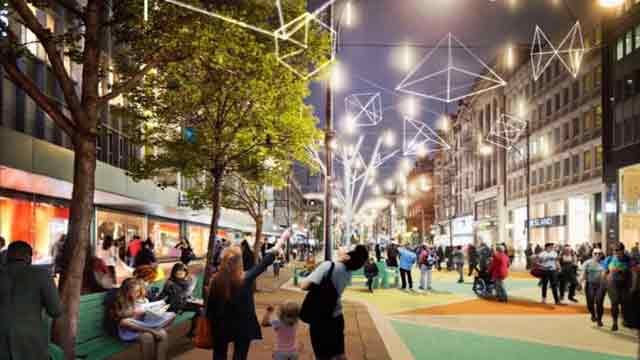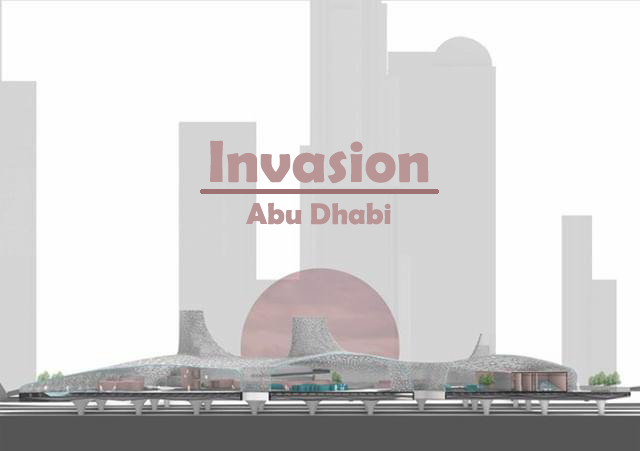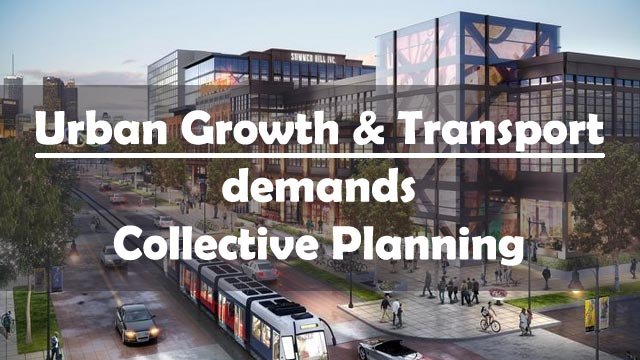
Pedestrianization: Improve Environmental Conditions
Pedestrianization: An efficient way to improve environmental conditions with increased economic and social benefits
There are different meanings regarding pedestrianization of which the simplest meaning is the removal or restriction of vehicular traffic from city streets. As an example in Hong Kong, pedestrianization is defined by the transport department as “to restrict vehicle access to a street or area for exclusive use of pedestrians”. Refer Image 1 for a photograph showing the pedestrian friendly central district area in Hong Kong.

The importance of pedestrianization in developing countries is increasing continuously because vehicular access are overcoming in cities more and more, in result the attendance of pedestrians in urban spaces is becoming less.
In recent time during the urbanization revolution, the expectations of life, immigration and the population of cities were increased very much and creating Megapolis with a large population is one of its results. The concentration of a large population in one or several cities has negative results especially in developing countries such as India. Heavy traffic on roads, air pollution and noise pollution caused by them with unsuitable environment for living are some of its results. Refer Image 2 for a photograph showing heavy traffic, pollution and unsuitable environment in the capital city of India.

Fortunately against the concentration of population in several cities and creating Megapolis, the system of intermediate cities (satellite cities) is also exists in the world that could be a solution for urbanism and settling the population. Instead of adopting Megapolis approach we can bring “intermediate cities” that have limited dimension with less area and at the same time it can be compatible and attractive for its residents with respect to services and facilities and situation of urbanization.
The Punjab Intermediate Cities Improvement Investment Program (PICIIP) is improving the quality of life of the residents living in the selected cities of Punjab in India. It is transforming the intermediate cities into small/large urban centers which are more efficient, accountable & serving as an engine of economic growth and sustainable development.
With creating this kind of cities because of its limited area instead of creating an unsafe, unpleasant and dangerous environment we would be enabled to respect pedestrian as a main user in urban designing. So we can create a city that has Pedestrianization and in result it can create a healthy and safe environment. We can say that Pedestrianization is a necessity in urban design to create sustainable and healthy cities.
1.1 Objectives of Pedestrianization
There are various reasons for having Pedestrianization in any area or district. First of all, pedestrianization aims to improve pedestrian’s safety and mobility. Another important benefit is related to the environment. This can help to reduce both noise and air pollution by discouraging or restricting access of non-essential vehicles mainly in livelihood or residential areas.
Moreover it helps to promote walking or bicycling as a transport mode by provision of separate tracks and also by making the walking experience more enjoyable. This means that pedestrianization creates a pleasant environment that people can involve in different social, cultural and tourism activities as well. We can notice the changes through pedestrianization and it can also improve the economical growing of that area or district.
1.2 Advantages of Pedestrianization
Generally we can categorize the advantages of pedestrianization in three groups:
- Environmental impacts;
- Economic impacts; and
- Social impacts.
Environmental Impacts:
In terms of environmental objectives, pedestrianization can help to alleviate and reduce air and noise pollution, as there would be a reduction in the number of cars and reliance on motor vehicles. In today’s world most of big cities are facing air and sound pollution problems which are making them unpleasant and dangerous for their residents.
Pedestrianization can promote walking as a transportation mode without any need to oil, so we can save fuel as well. Studies have shown that with pedestrianization mode using public transportation such as bus and rail transportation have been increased a lot especially in Delhi and its NCR area. Refer Image 3 for pictures showing 100% pedestrianization in the huge area of DLF Cyber city in Gurugram of NCR area.

Usually when pedestrianization is implemented, there can be more space on the streets not only for pedestrian users but also present opportunities for planning of additional activity areas with improved street furniture and landscaping. All these would help to enhance the beauty of the local street and create a healthy environment.
Economic Impacts:
About economic impact we can say that there are a number of impacts with pedestrianization. First of all, for most large cities like Delhi with heavy motor vehicle traffic, every year both the government and the private sector have to incur large economic losses in terms of air pollution related costs of lost productivity and so many medical expenses.
With less motor vehicle traffic and less pollution after pedestrianization, there can be a reduction in those costs incurred. Doctors and NGOs have issued various awareness programs regarding air pollution and its danger. Expenses are high to cure the diseases which are related to air pollution such as Asthma. So, we can say that the less air pollution causes the less related medical expenses.
The other economic impact of pedestrianization is on the retail income in that area or district. The statistics say that after closing vehicle access in an area or district the rate of retail turnover usually have been increased. Other than that, it has been seen that not only the shopkeeper’s benefits but also the role of rental income of properties and occupancy rate is increased at greater efficiency. Refer Image 4 for pictures showing 100% pedestrianised MG Road in Gangtok city of Sikkim state.

The main reason is ease of shopping for pedestrians as they can watch shop-windows or displays easier and enjoys without any fear from accidents due to vehicles. In some places where have pedestrianization scheme people will welcome coffee shops and food retails so much. After pedestrianization in MG road of Sikkim, a number of new hotels came along the road on the upper floors of the commercial shops.
The cities where there are pedestrianization districts often have a pleasure place to attract tourists. Ridge road in Shimla of Himachal Pradesh is also a good example of this. Controlled pollution, pleasant and healthy walking environment plus other amenities like sidewalk cafes, meeting spots, fountains or other street furniture help the areas to become daily city attractions for tourists as well as locals. MG road in Gangtok, Sikkim is one of the best examples in India for economic change in the area due to pedestrianization.
Social Impacts:
The implementation of pedestrianization in any area or district would have a number of social impacts also. First of all it helps to promote walking as a best alternate transport mode. People often do not walk when walking itself doesn’t include a good experience with heavy motor vehicle traffic and crowded narrow walkways. Actually with today’s urban city life people are walking less than before and rely on their private cars or taxis instead of other mass public transport. In result many people don’t have enough physical exercise which causes obesity and many other health issues.
Health specialists suggest that an adult should take part in physical activity for at least 30 minutes a day for at least 3 times a week. This can be done by walking, swimming or bicycling, as these are the best exercises. Performing such activities results in a number of physical benefits, some examples are to prevent obesity, reduce the risks of heart related diseases and strengthening bones.
Pedestrianized streets in many cities also served as cultural and entertainment plazas where people meet and greet not only during ordinary days but also during holidays and festive seasons as well. 100% pedestrianised streets, in many cases by trees, landscaping, street furniture and sidewalks, help to create a healthy and comfortable environment for people to engage them in various social activities. The other social impact of pedestrianization is that with segregation of people from vehicles, the safety of pedestrian and transportation abilities can be improved. Refer Image 5 for pictures showing a busy pedestrian area in Times Square of New York with public art installation encourages pedestrians to face each other, relax and socialize.

Of course at many places owners of private vehicles complain that their rights for entering pedestrianized districts have forgotten. In the pedestrianized district with multi-functional approach, the accessibility of residents, owners and other people to their homes or works were decreased and actually there is no justice about such people. One of the solutions is to create a multi-level parking near such areas with free parking access to these owners or residents.
1.3 Conclusion
As a conclusion from above touched aspects we can conclude that pedestrianization has positive economic and environmental efficiency. However positive social effects are fewer than other benefits. Because while there is some social effects for pedestrians, there are some disadvantages for drivers and people residing in that area or district or near there as well. But as a major conclusion pedestrianization done in a proper way with methodological approach can be an efficient way to improve environmental conditions in the areas or districts and in the cities as a whole.



